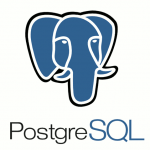Remove a lot of elements from very large SharePoint Lists

Lists in SharePoint is only look like database tables but not they are. For some things they are even better than databases – for common users for example, but for developers and administrators they are often not so good and friendly.
Let’s look for such a common thing in databases like "Truncate". To clear all the rows in a database table you need only to write "Truncate TABLE table_name" and execute it.
With SharePoint Lists it’s not so easy.
Some times earlier I had to delete data from list, but it was a list with small quantity of rows, about 5 or 10 thousands. But removing items from that list lasted about 10-15 minutes. It’s too long.
Recently I had to remove items from a list with 100k rows. I couldn’t even think of waiting for so long and started to look for solution.
I found a way of removing SharePoint list items using Batch.
But my task was some more difficult – I had to remove only first 90k rows of 100k. Below I write a powershell script for this action.
But it only moves items to SharePoint Recycle Bin. I will write how to clean deleted items from SharePoint Recycle Bin soon.
#Script to remove items from huge lists
Add-PSSnapin Microsoft.SharePoint.PowerShell -erroraction SilentlyContinue
cls
$web = get-spweb "https://spdev/MySite/"
$listname = "myFriends"
$list = $web.Lists[$listname]
$listItems = $list.ItemCount
Write-Host $listItems
$spQuery = New-Object Microsoft.SharePoint.SPQuery
$spQuery.ViewAttributes = "Scope='Recursive'";
#$perPage - variable to manage volume of deletable items per cycle
$perPage = 100
$spQuery.RowLimit = $perPage
#Count Items in SPList
$totalListItems = $list.ItemCount
Write-host "Total elements: " $listItems
#$minCount - The quantity you want to stay in the SPList
$minCount = 10000
#$cycles - how many SPListItems you need to remove
$cycles = $totalListItems - $minCount
#It's a query to remove from first iserted item, first in first out
$caml = '<OrderBy Override="TRUE"><FieldRef Name="ID" Ascending="True" /></OrderBy>'
$q = 0
while($q -lt $cycles)
{
#Marker to see that script works, mostly for debugging
Write-Host "-----------------------"
Get-Date
$listItems = $list.GetItems($spQuery)
$spQuery.ListItemCollectionPosition = $listItems.ListItemCollectionPosition
$batch = "<?xml version=`"1.0`" encoding=`"UTF-8`"?><Batch>"
$j = 0
for ($j = $perPage-1; $j -gt 0; $j--)
{
$item = $listItems[$j]
$batch += "<Method><SetList Scope=`"Request`">$($list.ID)</SetList>
<SetVar Name=`"ID`">$($item.ID)</SetVar>
<SetVar Name=`"Cmd`">Delete</SetVar>
</Method>"
$q++
if ($j -ge $count) { break }
}
$batch += "</Batch>"
write-host "Sending batch... "
$result = $web.ProcessBatchData($batch)
write-host "Emptying Recycle Bin..."
#If you want to remove all items from RecycleBin after removing from SPList, uncomment the string below.
#But I don't recomment you to clean Recycle because it can contain data from other users and may be they will want to restore them
# $web.RecycleBin.DeleteAll()
}
$web.Dispose()

 PostgreSQL in Docker: when DBeaver lies (and psql saves the day)
PostgreSQL in Docker: when DBeaver lies (and psql saves the day) SharePoint onPrem: Create ContentType with the specific ID
SharePoint onPrem: Create ContentType with the specific ID Send props from Child class component to Parent state component in React App
Send props from Child class component to Parent state component in React App